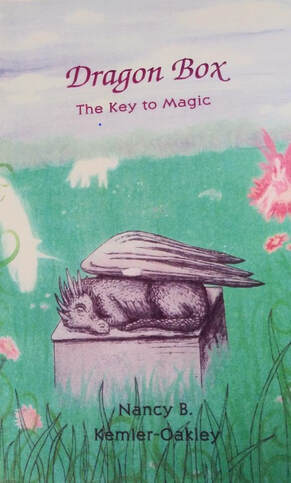 I discovered this magical story while visiting The Book Cottage in Jackson, Michigan. Tucked unassumingly in the Local Author section, it draws you in with it's curious watercolor cover, so different from all the other books on the shelf. A sleeping dragon with a scar on his wing makes the reader wonder... Inside, the story is filled with colorful characters with names that come straight from the world of pure imagination. So vibrant are Nancy's descriptions of the friends of this story, whether human or not, we feel we know them, and have been in their world before; we've had similar conversations... perhaps in our sleep, or while daydreaming in math class. This story of three children who are destined to save dreaming and discover their own power is one that every child (and adult) should read. The simultaneous simplicity and complexity of character, story, and legacy captures the imagination and supports childhood in a spectacular way. There were even a few points at which the tension on the page forced me to ignore my Reality and immerse myself, lending full energy to the battle. Precious to me is the ending... there is no more powerful magic than when an adult believes. This story makes the perfect before-bedtime read for younger children, and a delightful compliment to a second, third, or fourth grader's reading list. The vocabulary and turn of phrase insists children pay attention, but doesn't lose them in too much challenge. I hope that Nancy chooses to write more about this world. There is so much more we can discover with the characters and their way of life. Please, treat your children, grandchildren, and yourself to this enchanting adventure. And while you're at it, visit The Book Cottage in Jackson, and venture even further into the magic that awaits inside books.
0 Comments
Since computers became the "go to" tool for my profession, I've been searching for software programs that would help me to write more effectively. Over the years, I've tested dozens of options, investigating them all like a kid test-driving all the toys at the store before deciding which one to bring home. As a Passionate Plotter, my software requirements include a long list of "must haves"; things that simply using Microsoft Office alone can't provide. (Although for some, MS Word works just fine - no disrespect intended). On my "short" list are the following:
For all of this, since 2004, I've been using a program called "Power Structure"; and it works beautifully, for me. I've tried nearly every other piece of writing software I could find... always looking for the better writing mousetrap, but could find none. A few days ago, however, I came upon something new. It's called Causality. This is an interesting combination of outline writing and visual writing. It's been designed specifically for screenplay writers, but certainly, novelists could use it as well. It has all of my "must haves" listed above, as well as other features, and a customized color coding system. If you're a visual writer, this is a nice thing. Imagine the process of index cards tacked to your wall. You write a little bit about a scene or a plot point on each card, and move it around the wall until it gets exactly where you want it. You add more cards underneath with extra details and dialogue, and group the rows of cards into ordered scenes. Once your wall is filled, you write. This is exactly what Causality does, only DIGITALLY... Oh, and you don't have to wait to write, you can draw up your cards and fill in the writing holes as you go - or double-back and get to them when the inspiration hits. It's kind of a nifty program. As I said, I spent several hours working in this environment, and learning it's nuances. It's pretty cool. It's very adaptive, in that you can move things around on a whim to fit your storyline, all while keeping your story timeline intact. The color-coding is a great feature, keeping you more organized without too much effort. It also gives you a space to create a "mind map" version of character connections, so you can see visually how each of your main and subplot characters are interconnected. That's a cool thing, if your writing process depends on visuals. A particularly nifty feature is a thing they call "dependencies". Think "If/Then" statements on steroids. Essentially, it gives you the ability to tag plot points to each other in order of occurrence in your storyline. Imagine tagging that your bank robbers have to rob the bank BEFORE they can jump in the getaway car for their escape. If the escape should happen before jumping in the car, the program alerts you to that dependency and reminds you to fix it. Be clear, YOU have to set the dependencies, the software doesn't intuitively "sense" those for you... but it does keep good track of them.
This program doesn't give you leading questions to build your book, or help with setting or character development. But it handles separating dialogue and scene transitions especially well. Another thing it does very well is give you the ability to work on Flashback and Present tense storylines simultaneously, with multiple timelines in parallel. This is super-helpful if you have a story that's heavy in flashback memories. After spending a lot of time digging through all it does, I have come to the conclusion that, sadly, it's not the right tool for me. I'm not a visual writer. I don't think in pictures, or visual elements. I think in words and phrases, and tend to focus on the emotion and intellect that sentences derive, rather the bird's eye view of the way a story looks. Mapping programs, like this one, don't work as well for me. I found it to be clunky and more work than it was worth. I was spending too much time trying to make my story "look" good rather that writing a good story. This is no fault of the software... this modality simply isn't the way my brain functions. I will continue to work in Power Structure, probably until I die or it does. But I'm glad I looked into Causality, because now I'm aware of another software approach that I can recommend to writer friends... because I know we all work differently, and it's nice to have options. I recommend you check it out, test drive the free version (more features requires a monthly subscription or one-time, "all-in" fee), and see if it works better for you than what you're already using. Be aware, however, it only works on desktops and laptops. They do not have a tablet or smartphone version just yet. After you check it out, I'd be interested to hear your opinions, you can leave them in the comments below. ***I am not being paid a fee to sample Causality, or endorse Power Structure. I just like to share new things as I learn about them. Collaborative energy produces some of the most extraordinary art. Sometimes, we are fortunate enough to watch this process unfold before us, giving the work greater meaning, allowing us to connect on a deeper level with the specific nuances of the artistic process, even if we're not actively creative ourselves.
We're accustomed to watching this innovation with musicians. The sessions are often recorded and published to YouTube and other Internet access sites, so we can be "a fly on the wall", taking it all in from an Omniscient Narrator POV. We watch attentively as the drummer starts with a beat. The bassist adds to the journey, inviting us to walk the rhythmic path. The keyboardist offers a melody. The guitarist brings in a riff to fill the gaps. As a team, they construct the lyrics that erupt in a beautiful conflagration of melody and harmony. Together, their collaboration brings a fuller, richer sound and a song that attaches to the brain and speaks to the soul. Musicians call it "jamming" and if the looks on the musician's faces and their laughter is any indication, they have a great time doing it. Writers can, and some do, work in the same way... collaborating on wondrous pieces of imagination to entertain and lend empathetic insight to readers. They begin with an idea or a prompt - which could be just about anything - a photograph, a small piece of prose, a piece of music, or a piece of art. The idea makes its way around the table, and slowly, defiantly, and through boisterous conversation, a story begins to emerge. Each writer then constructs characters who begin to breathe, speak, and react interdependently. The team then begins to layer in subplots, and sprinkle in secrets that will either be suppressed or revealed. The writers carefully construct the "big bang" of the story, hurling literary meteorites left and right, leaving behind an impact crater readers can't ignore. The group then carefully collects loose pieces, and the remnants are deftly connected, when at last, The End is achieved. Writers call it "workshoping". Many writers enjoy conspiring in this way, like musicians. It's an exercise in creative exploration that enhances craft and improves time spent in solitary creation on individual projects. Have you ever wondered what it would be like to be a part of this process... or be a witness to it? This is your opportunity to Watch It Write! We're building a collaborative writing group, and we'll add it as programming to Indie Reads TV. We will gather a new group of five or six writers each month, and meet once a week to collaborate on a fiction project. At the end of the month, we'll have a finished novelette or novella, ready to be edited and go to press. Those of you at home or in our studio audience, will have a "Fly On The Wall" view of the process. And, if you're in the studio audience (we have room for about twenty Watch It Write spectators), you may have an opportunity to join in the collaboration, too! Our target date to begin is May 2020. If you're interested, fill out the sign up form below, and we'll embark on this new adventure together. Everyone who signs up will be contacted by April 1, 2020 to confirm your collaboration, and receive final details regarding dates and times. 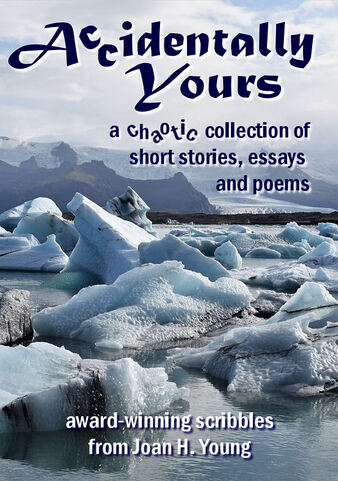 Find This Book On Amazon Find This Book On Amazon I was given the rare invitation to read an advance copy of Joan H. Young's new book, Accidentally Yours. It's an honor when a colleague and friend trusts you to read their work before it is released "into the wilds". I was humbled by her request, and delighted by the read. This collection of short stories, essays, and poetry is like a Literary Advent Calendar; each time I turned the page, I was given a little gift of story, perspective, and art. It was impossible to take it slowly. This work was so well-crafted that I opened the pages at every opportunity... while eating breakfast, while waiting at doctors appointments, and in the evening while unwinding with the dogs nearby. Each turn of the page enticed me to read more... pleasantly to the detriment of my "real" work. Remarkable in this writing are the flash fiction pieces sprinkled throughout. The art of writing a complete story in just a few short lines is a difficult skill to master. Joan does it here with an acumen and comfort that reveals the true nature of her outstanding writing gifts. The inclusion of excerpts from her previously published works, North Country Cache: Adventures on a National Scenic Trail (and it's sister volume to be released soon), the contributions she's made to periodicals, and her Dead Mule Swamp and The Dubois Files series', was a lovely tickle to the brain, insisting that readers explore those books, as well. The pull to go in every direction that Joan leads is akin to white water rafting... an adrenaline rush that keeps you paddling harder, with the expectation that you'll become refreshingly drenched in story. My favorite piece in this collection is titled, "The Case of the Cautious Couple". It's an amusing crime-whodunit-noir, expertly crafted with intrigue and a twisty ending I didn't see coming. Joan took the three styles and deftly infused them with a playfulness that is simultaneously intelligent and out-loud-giggle worthy. I delighted in her antics with character names, and the secret, deftly hidden in plain view, that drove the narrative. This one, I can easily imagine as a one-act stage play... oh the fun that could be had by actors and audience alike! This is a fabulous book... one that I will keep on hand to re-read frequently! Connect with this extraordinary new collection in E-book format HERE! Check back in a little while for the Print link. Watch my interivew with Joan on Indie Reads TV! 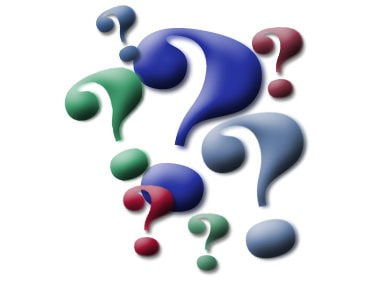 National Novel Writing Month is over, and those who participated and "won" now have a first draft of their book sitting prominently on their writing desk. Enthusiasm is at an all-time high, as writers imagine the prospect of becoming an Author in the New Year. You, too, may have been struck by this euphoria, standing at the author starting line. You'll be ready to leap forward at the starting gun, with the support of your loved one and that encouraging midnight kiss. Although writing a book is a huge accomplishment; it’s also a LOT of work. The demands of your Muse, your characters, and your readers are not to be taken lightly. Publishing a book is akin to getting married and having children. The process requires your full commitment… emotionally, intellectually, and financially. You’ll have to coordinate your editorial sessions around family and work obligations, and you’ll need to budget money for publishing and marketing. Taking a self-inventory to assess your mental, emotional, and financial preparedness is essential. Dorothy Parker once said, “I hate writing, I love having written.” Whether Self-Publishing, Indie Publishing, or going the Traditional route, it’s an arduous process, and a time-consuming one, at that. Be certain that this is the path you truly want to travel. There are ten basic questions you should ask yourself before you begin the madness that is publishing. Consider each one carefully. When it’s all over, and you still think you want to publish a book… by all means, jump into that pond with both flippers! 1.Can I publish on my own... Or do I need professional guidance? 2.What is my budget for this project? Am I willing to pay additional fees for additional services? 3.Does the publisher offer a contract? Am I happy with the royalty return rate? 4.How important is “Right of First Refusal” to me? How much control do I want over the publication process? 5.How much editorial assistance does my book require? Does the publisher offer a free manuscript review to assess the work to be done? 6.How supportive is my editor going to be throughout the process? Mail, phone, in-person meetings, email? 7.How much time is reasonable to go to press? 8.Have I reviewed copies of books this publisher has produced, and do they meet my expectations? 9.Are there reviews from others who have worked with this publisher; both positive and negative? 10.How important is marketing to me? Am I committed to being fully engaged in the process? 
Occasionally, I’m asked if books have a rating system, like films. We all know that reader audiences are defied mostly by age group, but there’s not really a well-known content rating system for books, like there is for film, television, and video games. So I decided to do some research on the question.
The film rating system works like this, and this is a good general guide for writing books, as well. G = general audiences, all ages. PG = parental guidance suggested, some material may not be suitable for children PG-13 = parents are strongly cautioned; some material may be inappropriate for children under age 13 R = restricted, children under age 17 requires an accompanying parent or adult guardian NC-17 = no children under age 17 admitted However, it doesn’t really speak to specific content. So, I did some digging and was surprised at how little I found. There isn't a “required industry standard” system; but I did find a group that is working to help clarify the answer, if you’re curious. Check out the nifty book rating community I discovered at My Book Cave. Their website states, “My Book Ratings is free for everyone to use or to rate books. This database is for the community by the community. Please join the effort! To maintain the quality of our community ratings, you do need to log in to rate books.” The information I found on this site was extremely helpful. They do an excellent job of providing guidelines for rating books for readers based on content. Their rating system allows regular readers to rate books based on content, so you always know what you're about to read. Their ratings include All Ages, Mild, Mild Plus, Moderate, Moderate Plus, Adult and Adult Plus. There may be other resources out there that provide similar information, but this was the most concise one I could find. I’ve love their definitions and explanations listed on their ratings website; and moving forward, I’m going to include this rating system and their icons in all my books and marketing materials, as well as recommend that the authors I help publish do so, as well. When accessibility is key to building a readership, it is in an author’s best interest to help readers identify content – especially if you want readers to recommend your books or give them as gifts. Please visit the site at https://mybookcave.com/mybookratings/meet-the-ratings/?ref=4ltrkd7hu3 for a greater understanding of their rating parameters and methodologies.
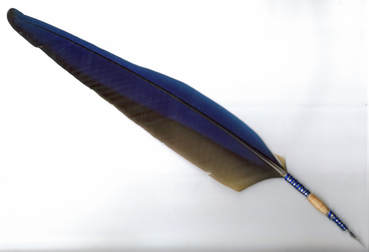 There’s a lively discussion that surrounds the choice to use a pen name or not. Some authors swear by them, others don’t need them. Here’s the discussion, in a nutshell. Pen names can be helpful if you write children’s books as well as mature genres. It can be helpful to have different personas to promote to different audiences, lest you offend a reader, and they put all of your books back on the shelf. People can be quick to jump to conclusions and generalize; pen names can stave off some of those repercussions. Pseudonyms are also helpful to those authors who want to maintain a distance from the limelight; those who may want to create an air of mystique or build in anonymity so that their families and friends aren’t over-taxed by an author’s celebrity or notoriety. All are good arguments for utilizing an author alter ego. Pseudonyms can also cause potential problems. Imagine attending a book signing event… someone calls your name, you don’t answer. Or imagine the embarrassment of signing the wrong name on the inside cover of a fan’s book. Consider the complications of having social media and a website with two (or more) different names; just the time factor alone would make me cringe. The worse case? A royalty check written out to the wrong name! What’s my personal take? I’m proud of everything I write, and I’ll never hide my accomplishments under a false identity. Readers may or may not buy my books because I write in a genre they don't approve of... and I endorse their freedom to choose without remorse or second-guessing. Also, there's something "old world" to me about my name. You see, I got married, for the first time, later in life, my son was eighteen, and walked me down the aisle at our wedding. I'm progressive about some things, but more traditional about others, and taking my husband's name was one of those things that I kept a traditional viewpoint on. Even after forty-plus years of carrying my family's surname, I thought it was an important statement about my evolving identity to replace my old last name with my husband's. I think that it's important to reflect this evolution on my book covers, too. Since marrying, I'm not entirely the person I was with my maiden name... and my writing isn't the same, either. I felt responsible to carry that tradition, and for me, it felt right. However, I must tell you, it took me nearly a full year of marriage to remember to respond when someone called me "Diana Kathryn Plopa"; and that was EVERYWHERE I went. At this stage of my life, I'm not sure I could unlearn that; and I can tell you I certainly don't want to un-learn it. Imagine the confusion I'd be creating for myself, trying to remember when I have to be who. That's more of a kerfuffle that I'd like to deal with, thank you. Drake, on the other hand, has a much easier time of things. He has a clan name, rather than a surname - and Mallard is pretty easy to remember! |
WelcomeYou'll find some interesting stuff here... some Op Eds, some Information, Book Reviews, and More. Poke around the categories and see what ruffles your feathers... in a good way! Archives
April 2024
Categories
All
|
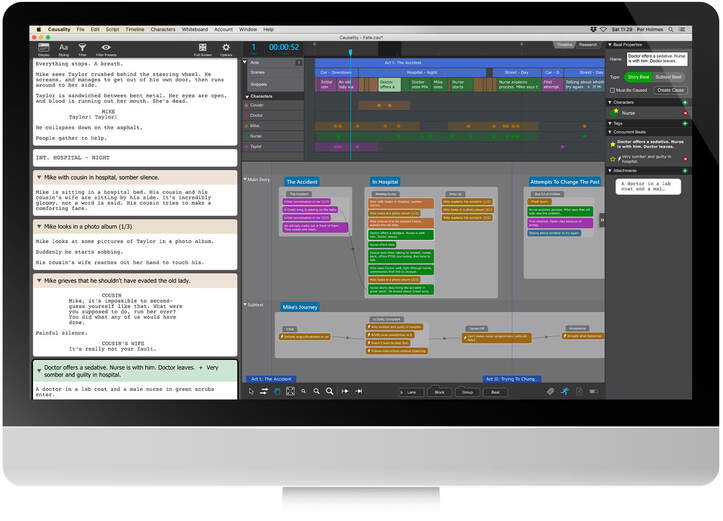
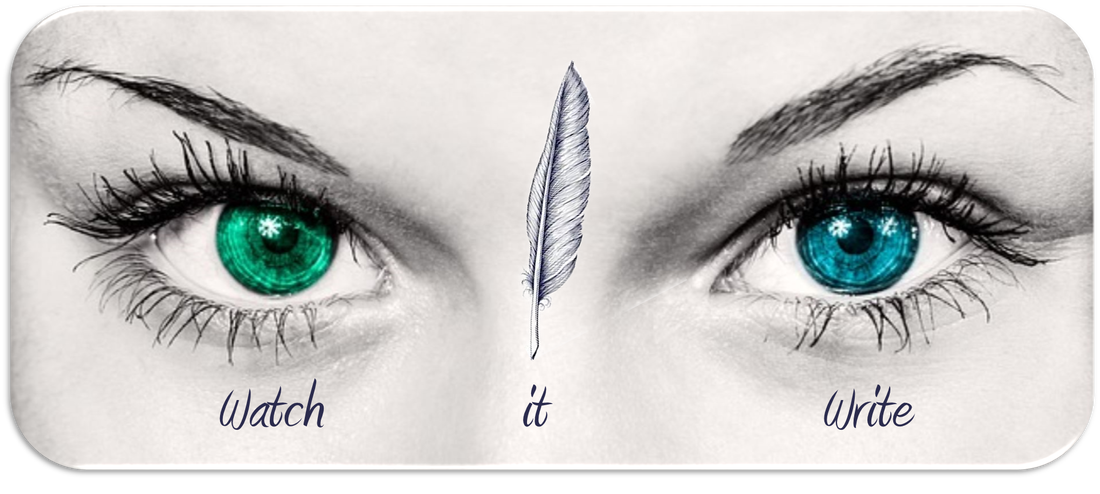

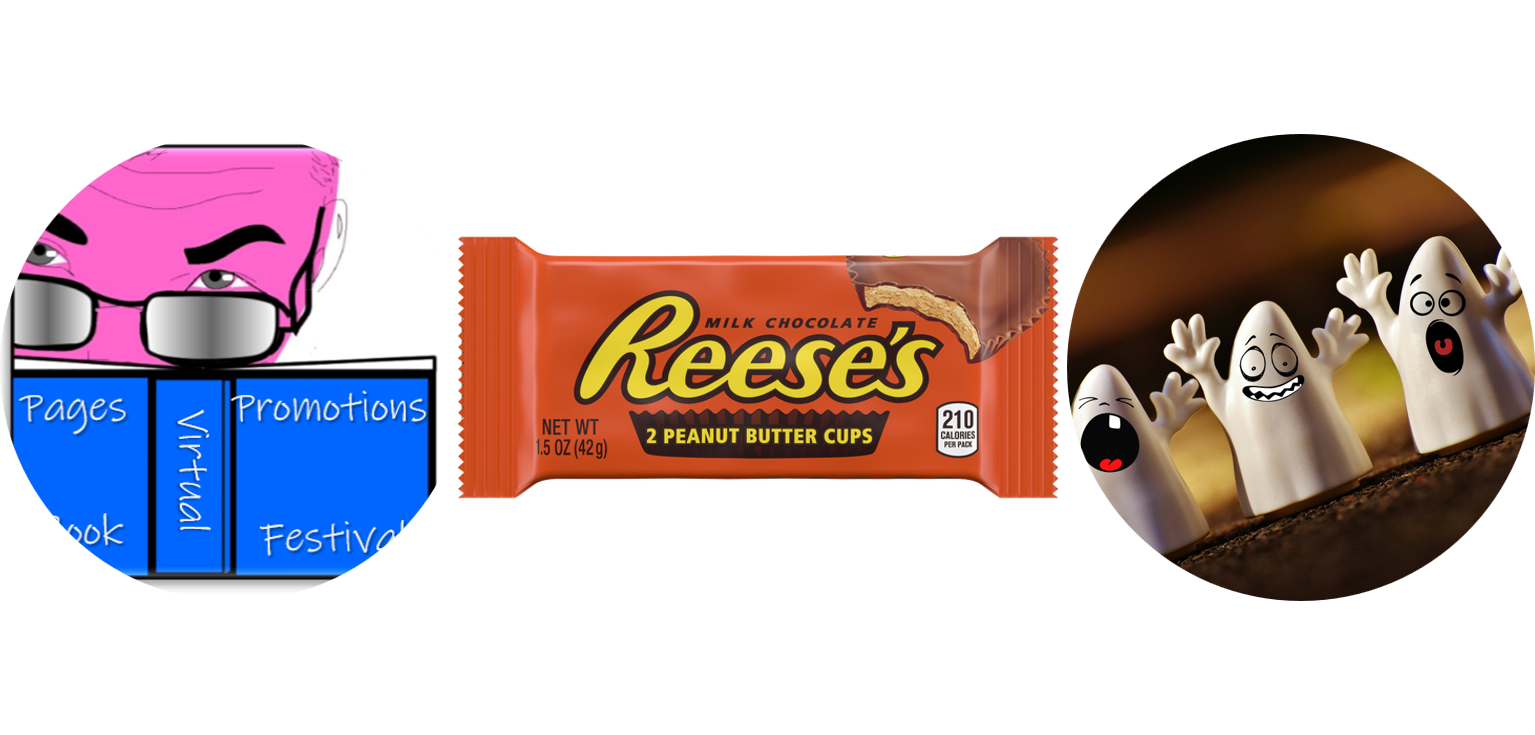
 RSS Feed
RSS Feed